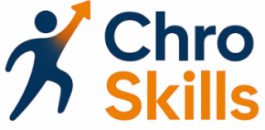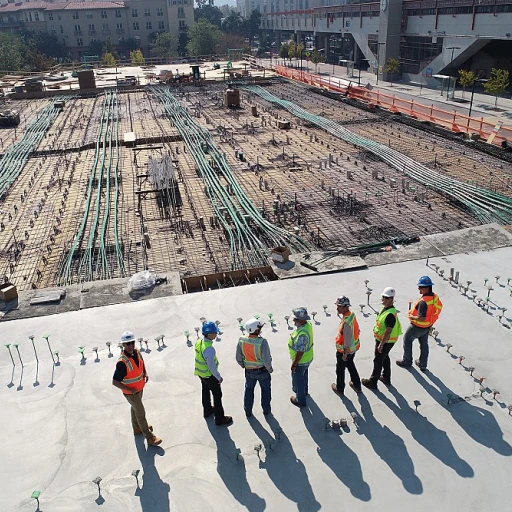
Understanding the Role of a Chief Human Resources Officer
Crucial Responsibilities of HR Leadership
The role of a Chief Human Resources Officer (CHRO) is indispensable in ensuring the seamless operation and growth of organizational human resources. One of their primary responsibilities is performance management, where they focus on enhancing employee performance ability and efficacy. By establishing robust strategies and frameworks, the CHRO ensures that all team members are aligned with the company’s objectives.
Performance Management and Strategy
The CHRO must understand the dynamics of performance improvement plans (PIPs) and be proficient in creating strategies that help employees meet their performance goals. This involves setting clear performance expectations, designing improvement plans, and giving constructive feedback. Employee progress must be tracked diligently through regular check-ins, allowing for real-time adjustments to the improvement process.
Enhancing Employee Support
A crucial skill for a CHRO is the ability to support employees throughout their performance improvement journey. Providing the necessary resources and training can significantly impact an employee's ability to overcome performance issues. It’s essential for the CHRO to ensure managers are equipped to effectively implement PIPs while offering encouragement and feedback.
Ultimately, a CHRO's role is to foster an organizational culture that values continuous improvement and supports each employee's growth. By addressing performance issues head-on with clear goals and actionable plans, the CHRO directly contributes to the productivity and success of the organization.
Key Skills for Effective Performance Improvement
Essential Capabilities for Chief HR Officers
For a Chief Human Resources Officer, developing a strong skill set is crucial in navigating the complexities of performance improvement and management. The ability to design and implement effective performance improvement plans (PIPs) is key to enhancing employee performance and achieving organizational goals.
Communication and Feedback
An essential aspect of a CHRO's role is effective communication. Providing clear goals and feedback to employees helps address performance issues and fosters an environment of growth and development. Regular check-ins and consistent communication allow employees to understand expectations and gain insight into their progress.
Problem-Solving and Support
Performance management often comes with challenges that require adept problem-solving skills. CHROs must be able to identify and address issues swiftly, offering support and guidance to managers and employees alike. Through proactive measures, they can provide the necessary resources and support employees need to improve performance.
Strategic Planning and Goal Setting
A well-designed performance improvement plan begins with strategic planning. CHROs must establish clear, attainable goals that align with the company’s objectives. By setting a concrete action plan, they help employees focus on improvement areas and develop a roadmap for success.
Adaptability and Continuous Learning
Adapting to changes and pursuing continuous learning are fundamental skills for a CHRO. As organizational needs evolve, so should the approaches to performance improvement. Staying informed on best practices and emerging trends ensures that PIPs are relevant and effective.
To delve deeper into refining your performance review skills, visit mastering the art of performance review skills for a comprehensive guide.
Designing a Performance Improvement Plan
Creating a Framework for Employee Enhancement
Designing a performance improvement plan (PIP) requires a well-structured approach to effectively address performance issues and guide employees towards improvement. This process involves several critical steps that ensure the plan is both actionable and supportive.
First, it is essential to clearly identify the specific performance issues that need addressing. Pinpointing these areas allows managers to develop targeted goals that will help employees focus on improving their performance. A successful PIP involves collaboration between the manager and the employee, ensuring that both parties have a shared understanding of the goals and expectations.
Once the performance issues have been identified, an action plan must be devised to offer clear, achievable steps for improvement. This plan should outline the resources and support available to help employees improve their performance, including training opportunities and feedback sessions.
Incorporating regular check-ins and feedback throughout the PIP process is crucial for monitoring employee progress. These sessions provide an opportunity to discuss any challenges the employee might face and adjust the plan accordingly. Regular check-ins also foster a supportive environment, reassuring employees that they have the necessary tools to succeed.
The ultimate goal of any PIP is to not only address performance gaps but also to nurture long-term improvement. Therefore, it is important to establish metrics for measuring employee progress and the overall effectiveness of the improvement plan. By doing so, organizations can ensure that they are continuously refining their performance management strategies and fostering a culture of growth.
For those seeking to further refine their approaches, exploring the role of a mentor can provide additional insights into effective PIP and employee development strategies.
Training for Performance Improvement
Empowering Managers and Employees Through Training
Training is a cornerstone of any successful performance improvement initiative. It plays a crucial role in equipping both managers and employees with the necessary skills to effectively navigate the Performance Improvement Plan (PIP) process. A well-structured training program can provide the clarity and support needed to address performance issues and foster a culture of continuous improvement.
Key Elements of Effective Training Programs
- Clear Objectives: Establish clear goals for what the training aims to achieve. This ensures that both managers and employees understand the purpose and expected outcomes of the PIP process.
- Comprehensive Content: Training should cover all aspects of performance management, including how to identify performance issues, develop improvement plans, and conduct regular check-ins to monitor employee progress.
- Interactive Sessions: Incorporate interactive elements such as role-playing or scenario-based exercises to help employees and managers apply what they learn in real-world situations.
- Continuous Feedback: Provide ongoing feedback to participants to help them refine their skills and improve performance. This feedback loop is essential for both personal and professional growth.
- Support Systems: Establish support systems that employees can rely on during the PIP process. This includes access to resources, mentorship, and regular check-ins to discuss progress and address any issues.
Ensuring Long-Term Success
Training is not a one-time event but an ongoing process. To ensure long-term success, organizations should regularly update their training programs to reflect changes in performance management strategies and industry best practices. By investing in continuous training, companies can help employees not only meet their performance goals but also exceed them, driving overall organizational success.













